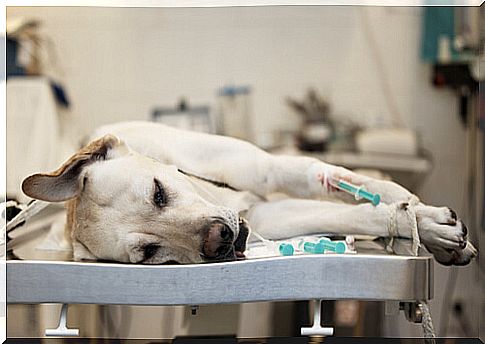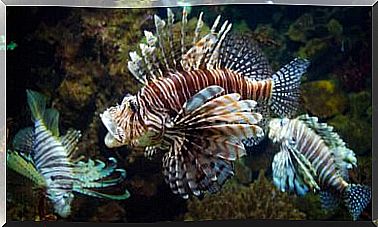Chemotherapy For Dogs

If you have a puppy with cancer, surely you want to do everything for it to recover and not suffer too much from the effects of the disease. Chemotherapy is one of the options that the veterinarian will indicate in some cases and it can be less aggressive than the treatment in humans. Let’s get to know some more details of the procedure.
The most common types of tumor in dogs
Lymphosarcoma and mast cell tumors are the most common cancers that affect dogs and are usually treated with chemotherapy.
The first type, also called lymphoma, consists of a neoplasm of lymphocytes, which transform into malignant cells, in healthy organs, such as:
- lymph nodes
- Liver
- Spleen
- Other organs with lymphatic tissue

This type of disease should not be confused with lymphatic leukemias, which originate in the bone marrow.
In turn, mast cell tumors are the most common skin cancer in dogs and can spread to internal organs. In most cases, it is possible to combine surgical and pharmacological treatment, achieving better quality of life for the affected pet.
Chemotherapy for Dogs, an Option for the Treatment of Cancer
Chemotherapy, by causing the destruction of cancer cells, is capable of promoting the animal’s cure if it is the only tool used for treatment.
The method is most effective when tumors are small or when they have a high capacity for proliferation, with a high number of rapidly dividing cells, precisely those that are destroyed by chemotherapy.
When the tumor has grown, the cancer cells are at rest and therefore the treatment is less effective.
Questions to consider before starting chemotherapy in dogs
When confirming the diagnosis of cancer, the professional will consider all treatment possibilities for the animal.
Anyway, if chemotherapy is one of the options, it is necessary to thoroughly assess the hairy’s health status before starting the procedure.
It is not advisable, for example, to use the method in animals with advanced tumors, metastasis and deterioration of vital organs (kidneys, liver, etc.). In these cases, it is more likely that this treatment, instead of improving the quality of life, will end up making it even worse.
Uses of chemotherapy according to the type of cancer
According to the type of cancer that affects your furry, the veterinarian will choose the best way to administer chemotherapy.
In the case of tumors that affect the lymphatic system, the only option may be chemotherapy, since it is not possible to operate on neoplasms that affect the entire body of the animal.
When tumors are located in a specific part of the body, there are some alternatives:
- In case of metastasis: First, the tumor is operated on, and then treatment with chemotherapy is started to try to delay the appearance of malignant cells in other organs.
- When it is not possible to eliminate the entire tumor through surgery: Chemotherapy is used to destroy the cancer cells that remain in the body.
- When it is not possible to remove the tumor through surgery, thanks to its large size: Chemotherapy is used to stop the tumor from progressing and, if possible, to reduce its size.
Side Effects of Chemotherapy in Dogs

Photo: Soggydan Benenovitch
According to statistics, less than 5% of dogs that receive this treatment develop any serious side effects.
In most animals, side effects are usually mild and transient, such as:
- loss of appetite
- Nausea
- vomiting
- Diarrhea
- Drop in immune defenses
Either way, your veterinarian has the tools to prevent or deter the side effects that chemotherapy can have on your dog.








